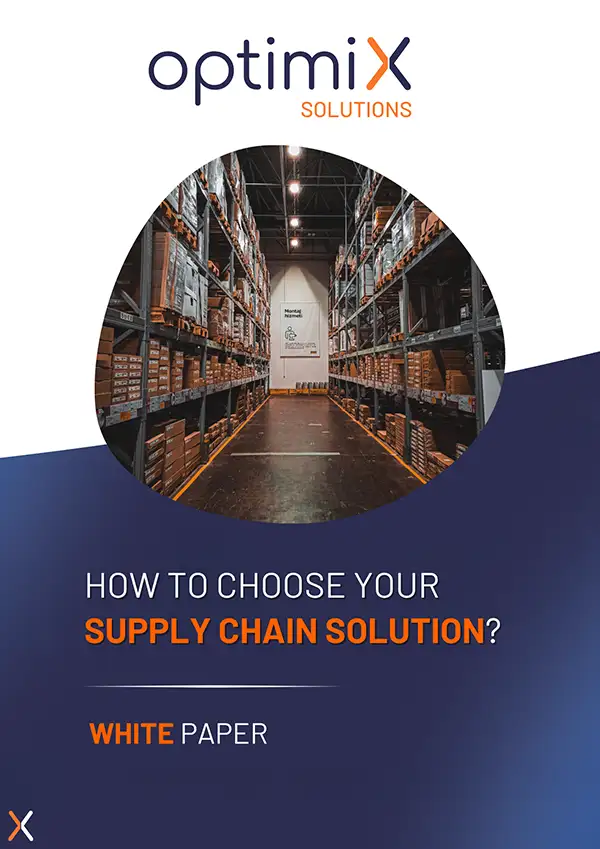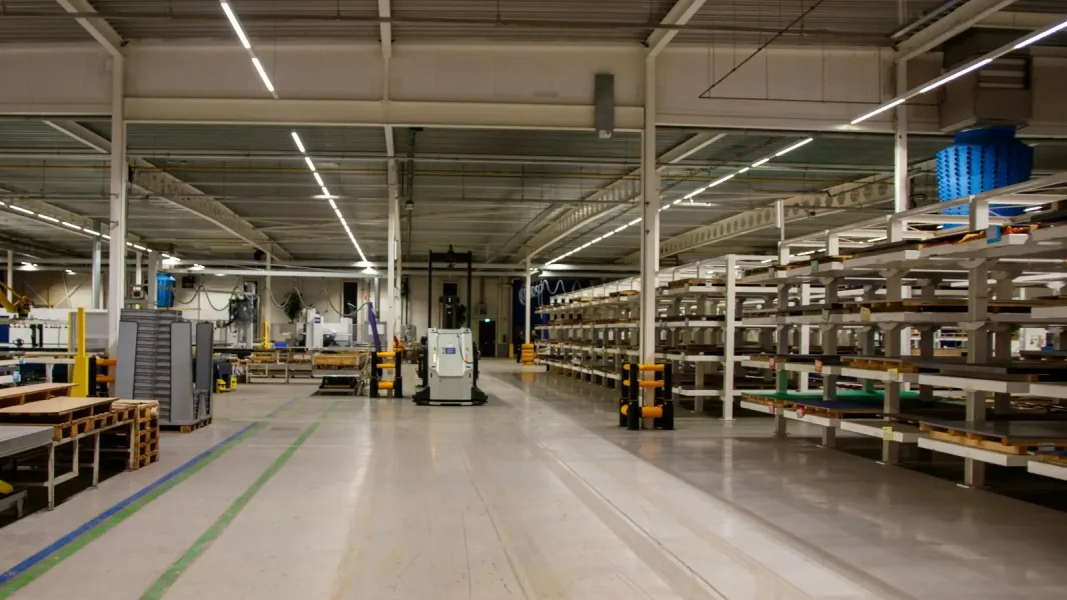In the retail sector inventory management is an operational pillar as strategic as it is complex. Between seasonal peaks in demand, one-off promotions and constant pressure on costs, maintaining a stock levels without overloading warehouses becomes a real balancing act.
Too much stock, and you risk tying up cash and obsolescence. Too little, and you risk product shortages, lost sales and frustrated customers.
Stock optimization is not simply a matter of reducing volumes, but of finding the right finding the right balance between product availability, logistics efficiency and overall profitability.
What is inventory optimization?
Inventory optimization refers to the set of methods, tools and best practices that enable us to maintain an inventory in line with demand, while minimizing the costs associated with holding it.
Contrary to popular belief, it’s not simply a question of reducing warehouse quantities, but of dynamically adjusting stock levels. but to dynamically adjust stock levels according to sales forecasts, supplier lead times, seasonality and logistical constraints specific to each company.
With a view to optimization, historical sales data, product classifications, consumption patterns and supply contingencies are analyzed in detail.
The aim is toanticipate needs rather than respond to them in a hurry, using high-performance tools that automate the calculation of replenishment thresholds, the definition of safety stocks and multi-level planning.
Why optimize inventory?
Optimizing inventory serves two essential purposes: improve profitability while guaranteeing while guaranteeing optimum quality of service for the end customer.
There are many advantages to optimizing inventories for companies, particularly in the retail sector. Efficient inventory management enables a significant reduction in logistics costs, including storage fees, labor and minimizing the risk of markdowns or obsolescence. At the same time, it ensures constant product availability, thus meeting consumer expectations.
In retail, a sector characterized by intense competition and fluctuating demand, inventory optimization improves responsiveness to unforeseen events, such as flash promotions, supplier stock-outs or rapidly changing consumer preferences. What’s more, it provides greater visibility across the entire supply chain, facilitating strategic decisions on procurement, sales and omnichannel distribution.
What's the difference between inventory management and inventory optimization?
It is important to distinguish between stock management its optimization. Management refers to the day-to-day operations of monitoring stock levels, recording goods movements, managing inventories and updating reference data. It is essential to ensure consistency between physical and information flows.
Optimization, on the other hand, goes beyond this logic of control: it adopts a proactive and strategic stance. It’ s based on in-depth data analysis, anticipation of future needs, simulation of logistics scenarios and implementation of the most appropriate solutions. differentiated policies according to product families. In other words, where management ensures that the company “sees” its stock, optimization aims to “predict” to make better decisions.
What are the different types of stock?
Understanding the different types of stock is fundamental to developing a coherent optimization strategy. For example, the safety stock acts as a buffer against unforeseen events, whether a supplier delay or an unexpected rise in demand.
Other categories must also be taken into account, such as seasonal stockaccumulated in anticipation of specific commercial events (holidays, sales, back-to-school).
Finally, obsolete or dormant stockoften overlooked, represents a considerable hidden if left unchecked.
How to optimize inventory efficiently?
To optimize inventories in the long term, you need to adopt a structured approach. First of all, we need to make a detailed analysis of the existing situation: what are the product rotations? Which items generate overstock or frequent stock-outs? This step enables you to identify areas of risk and room for improvement.
Next, it is essential to segment the assortmentincluding ABC classification classification, which prioritizes products according to their contribution to sales or frequency of sale.
Based on this segmentation, it becomes possible to define differentiated stock policies Product A, with its high turnover, will benefit from a precise safety stock and frequent replenishments; product C, on the other hand, may be handled on an ad hoc basis.
Optimization also depends on quality of forecasts. These can be made from historical data, but also enriched by statistical models or artificial intelligence. Finally, automation is an essential lever: modern inventory management solutions can trigger alerts, suggest orders or calculate optimal levels in real time.
Different methods for stock optimization
Stock optimization is based on several complementary methods, adapted to the needs and maturity of each company. Among the most commonly used, the ABC method classifies items according to their value and frequency of rotation, in order to concentrate management efforts on the most strategic products. Automatic replenishment techniques, based on minimum and maximum stock thresholds, ensure constant availability while limiting surpluses. Just-in-time (JIT ), on the other hand, aims to minimize inventories by synchronizing production or supply as closely as possible with demand. Other approaches, such as material requirements planning (MRP ) or AI-based demand forecasting, enable finer-tuned, more reactive management.
The challenge is to adapt these methods to the company’s specific needs, taking into account market constraints, seasonality and supply lead times. Combined with high-performance technological tools, they become powerful levers for increasing agility, profitability and customer satisfaction.
In-store stock optimization
L’in-store inventory optimization aims to maintain a balance between product availability and cost control. Too much stock ties up capital and clogs up sales space; too little stock leads to stock-outs, lost sales and customer dissatisfaction. To achieve this balance, it is essential to rely on reliable data: sales history, seasonality, local trends and demand forecasts.
Tools such as automatic replenishment, product segmentation and ABC analysis enable stock levels to be adjusted in real time. Good coordination with supply chain planning ensures greater responsiveness to market fluctuations and buying patterns.
What are the best practices for stock optimization?
Certain practices are particularly effective for successful optimization. The first is to continuous monitoring of logistics performance indicators: turnover rate, stock coverage, out-of-stock rate or obsolescence rate. These KPIs enable you to make any necessary adjustments.
The second is based on a regular review of logistical parameters. : order thresholds, delivery times, minimum volumes. In retail, these elements evolve rapidly and need to be adjusted as the business grows. It is also advisable to involve operational teams in the feedback of information from the field, and to integrate inventory management into the information system as a whole, in order to guarantee a coherent vision from start to finish. And above all, to use the best tools for stock optimization.
To find out more on this subject, we invite you to read our article here.
The challenges and stakes of inventory optimization in retail
Inventory optimization is a major strategic challenge. strategic issue. It is no longer simply a question of economics or logistics. It has become an essential strategic lever for retail players, particularly in an increasingly complex omnichannel environment.
The first obstacle is data quality. Without reliability and historical depth, it becomes difficult to build solid predictive models or define a relevant strategy. Added to this are issues of organizational transformation: the digitization of processes and the adoption of new tools often meet with internal resistance, hampering the implementation of more agile management.
The growing complexity of distribution networks makes the challenge even greater. Inventory optimization in the DIY sector, for example for example, is essential: each store, warehouse, e-commerce platform or logistics partner must be able to access a unified, real-time view of availability.
And yet, the benefits are far-reaching: an improved customer experience thanks to fewer disruptions, cost control through finer allocation of resources, and intelligent growth management that transforms the supply chain into a genuine competitive advantage.
The challenge for retail players is to take this step methodically, with the help of specialized solutions such as XFR- Optimix Forecast Replenishment, capable of transforming inventory management into a real competitive advantage.
In conclusion, good inventory management relies on acombination of tools and proven management methods. By adopting a suitable management solution, such as high-performance inventory management software, you can limit excess inventory, avoid stock-outs, and maintain optimal stock levels.
Controlling the supply chain and inventory not only reduces storage costs, but also guarantees a high service level.
By integrating practices such as just-in-time, average stock analysis and regular physical inventory, companies can transform their logistics into a genuine lever for sustainable performance.







